
Succession gardening covers an array of planting methods that can double or triple your vegetable yields – all by using the same plot of land in a single growing season.
Best for those who have a shorter growing season or limited garden space, succession planting involves careful planning based on crop type, maturity dates, space, and timing.
Here are five strategies you can use to maximize your harvest:
1. Harvest and Sow

As one of the simplest succession planting techniques, harvest and sow means planting new crops once older crops have finished, as many times as you can. The idea is to never allow your garden beds to remain dormant after you’ve pulled the plants at harvest.
This method works great by alternating cool season and warm season crops.
For example, plant cool weather veggies like lettuce in spring and harvest in summer. Add some fresh compost to the row and sow a heat-loving plant such as green beans or cucumber. Once these have finished, pull the plants and sow again with broccoli or kale for an additional harvest in autumn.
Tip: While waiting for your spring crops to come in, give your summer crops a head start by starting them indoors. A week before your cool seasons crops are ready to harvest, harden off the seedlings. When it’s time to harvest, you can plant your summer crop right away. Do the same for your autumn plantings.
2. Staggered Plantings
Also known as relay planting, this approach is excellent for maintaining a continuous harvest so your crop doesn’t come in all at once. Instead of sowing the entire row in spring, plant fewer seeds initially and add more every few weeks.
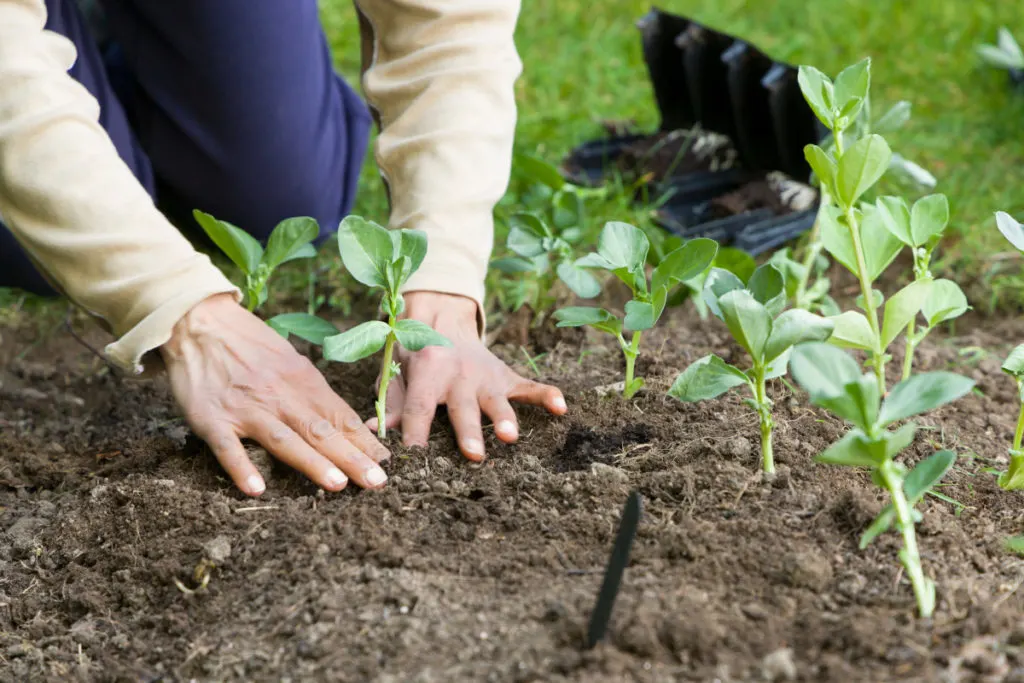
Here is a handy chart that outlines planting intervals of 7, 10, 14, 21, and 30 days, depending on the vegetable. This way you will be able to harvest throughout the season and won’t be left with a ton of produce that would need to be consumed quickly.
Good staggered planting crops include salad greens, bush beans, carrots, radish, collards, peas, beets, chard, and turnips.
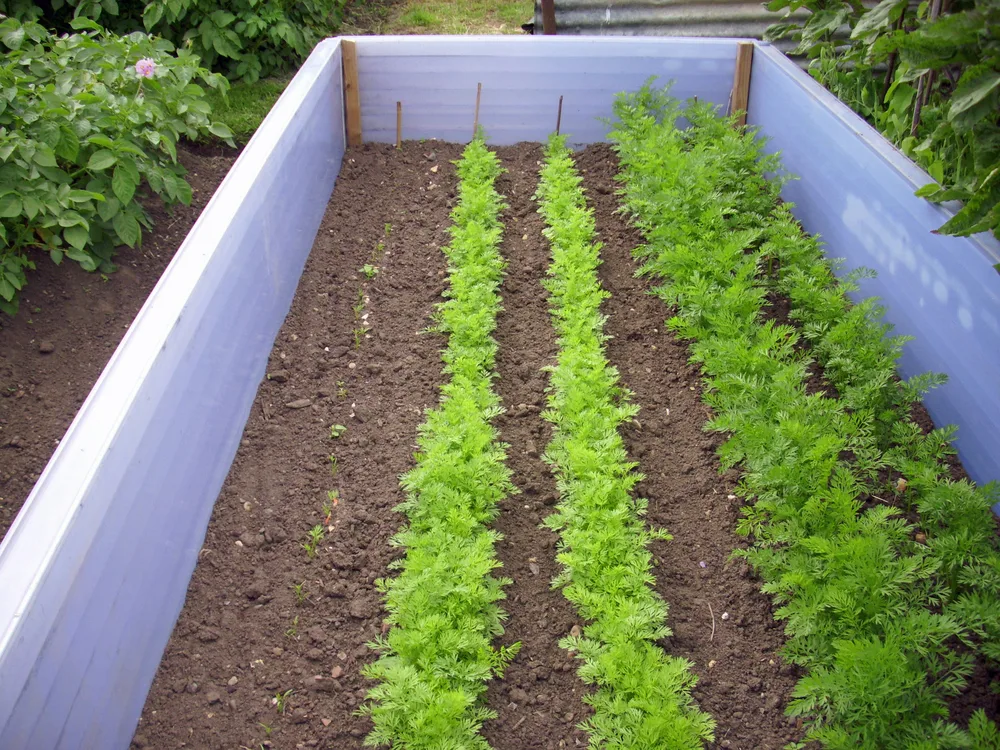
Tip: Make your life a little easier by marking planting times on your calendar. Set up email reminders or the use the alarm on your phone to keep on top of the schedule.
3. Companion Plant Intercropping
Companion planting is a form of polyculture that pairs up non-competing, mutually beneficial cultivars.
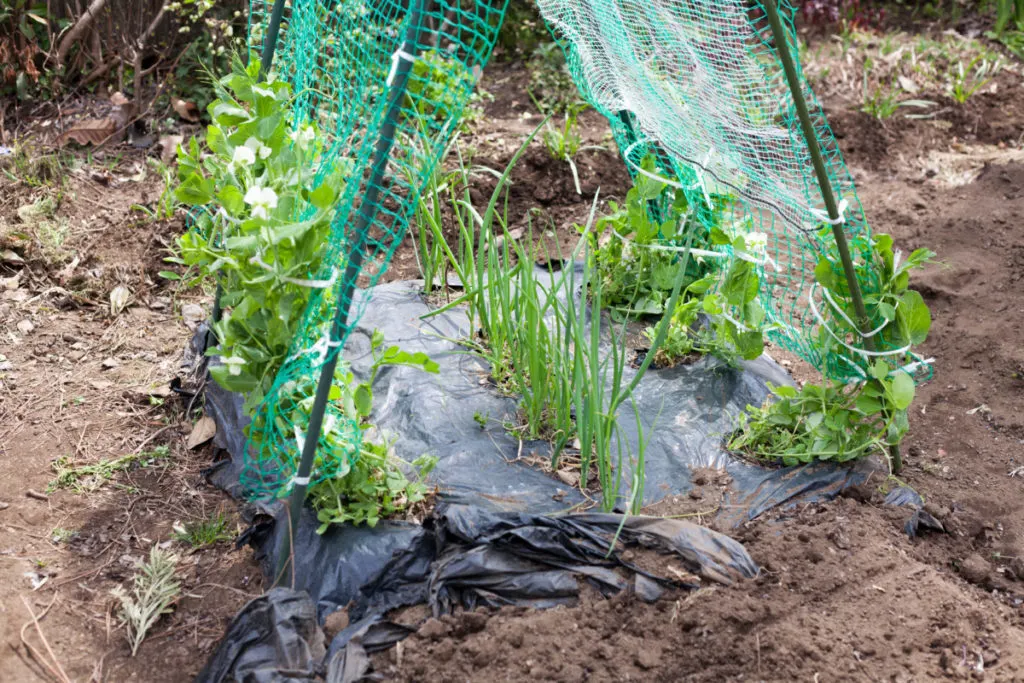
While companion planting is best known as a natural way to suppress pests, increase pollination, improve flavor, enhance soil fertility, and provide a home for good guy insects, it’s also a great way to maximize garden space and boost crop productivity.
To utilize companion and succession planting at once, intercropping allows you to grow two or more plants in the same space. This technique requires careful planning but may be accomplished in a few different ways:
Choose crops with different maturity dates.
This method allows you to grow both plants at the same time, harvesting one before the other needs the space to grow. One example is pairing up radish and pepper. Since radishes are quick growers that are ready to be harvested in 3 to 4 weeks, they will be removed before the pepper grows large enough to shade them.
Grow shallow rooted and deep rooted crops together.
By choosing plants based on their root depth, you can prevent them from competing for nutrients in the soil.
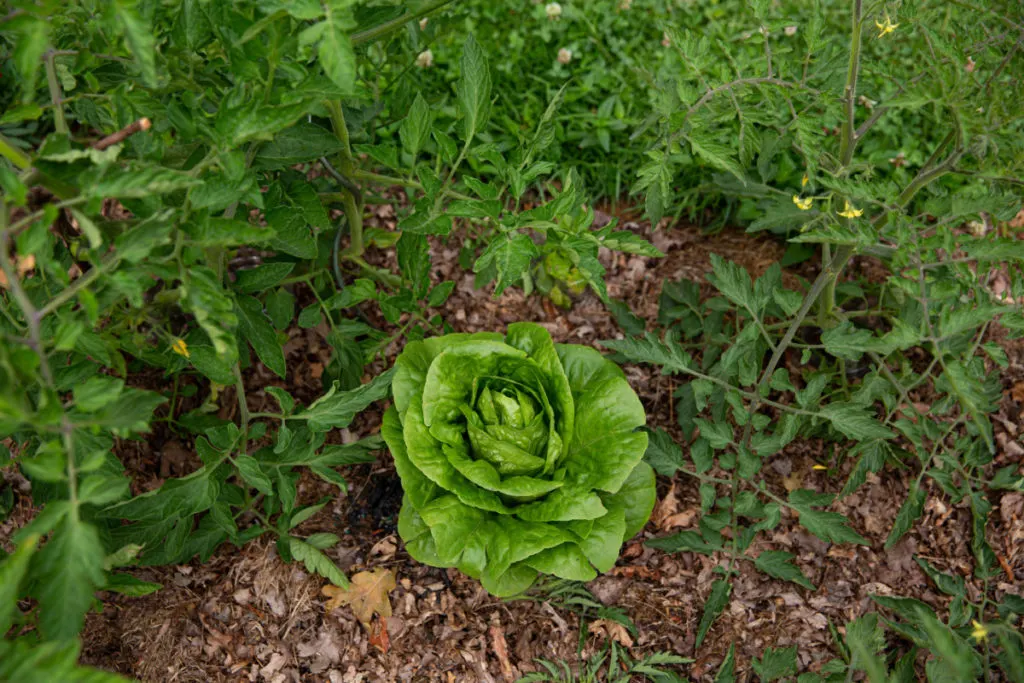
For example, shallow-rooted lettuce makes for a wonderful companion alongside the deep taproot of beets. By ensuring the plants’ root systems are growing at varying depths, you can optimize your vegetable garden space while preventing one type of plant from overrunning another.
Sow tall crops with plants that need partial shade.
Take advantage of the height and bushiness of sun-loving plants by pairing them up with cultivars that need part shade.
Try planting tomatoes facing west and cabbage toward the east; the cabbage plants will benefit from the cooler morning sun and the tomato plants will help protect them from the heat of the afternoon.
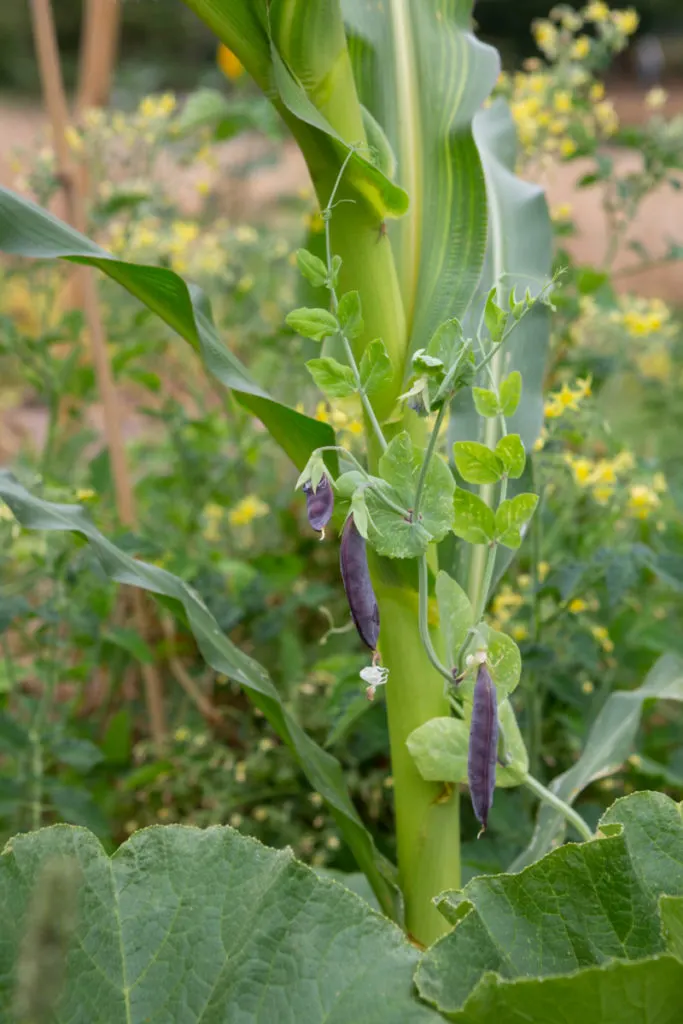
Another good example of companion intercropping is the Three Sisters: sweet corn, climbing beans, and winter squash.
This technique was developed by Native Americans about 5,000 years ago and it involves creating flat topped mounds of rich soil, 20 inches in diameter and 12 inches high. Corn is planted first in the center, and when it is about 6 inches tall, beans and squash are sown around it.
These three cultivars benefit each other; the corn gives the beans a structure to climb, the beans are nitrogen fixers that improve soil fertility, and the squash grows along the ground to suppress weeds and keep moisture in the soil.
Tip: Intercropping with companion plants is one of the more challenging succession planting techniques. Before sowing your seeds in the ground, visualize your garden space layout, including plot size, plant placement, walkways, and stepping stones.
You can sketch it out by hand or use an online garden planning tool like this one. Depending on how complicated your design, you may end up with something like this – 33 types of plant in a 15 by 13-foot space!
4. One Crop Type with Different Maturity Dates
By planting several cultivars within the same crop type, you can achieve an uninterrupted harvest since they will mature at different rates. Look for crops with early, mid, and late season varieties.
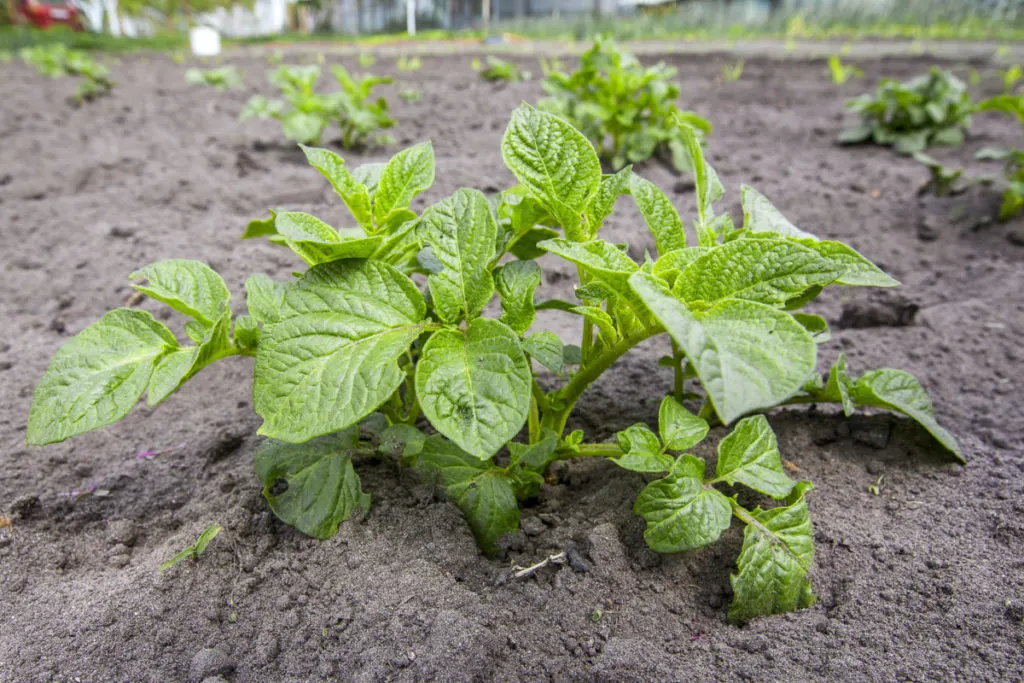
The potato is a good example, with Yukon Gold maturing in 75 to 90 days, French Fingerling in 95 to 110 days, and All Blue in 120 to 135 days. You can also try mixing and matching early season, everbearing, day-neutral, and short-day strawberries. Or short day, mid-day, and long-day onions.
The best part of this strategy is once you’ve decided what varieties to plant, you sow it all at once and harvest as they ripen – no need to track dates or set up reminders for yourself.
You’ll also be able to enjoy a variety of different flavors and culinary uses within the same crop, like cherry tomatoes for salads, Roma tomatoes for sauces, and beefsteak tomatoes for slicing.
Tip: Check the seed packet to determine the days to maturity for your specific growing region.
5. Cut and Come Again
Perhaps the easiest way to get a succession of harvests throughout the growing season is to opt for cut and come again vegetables.
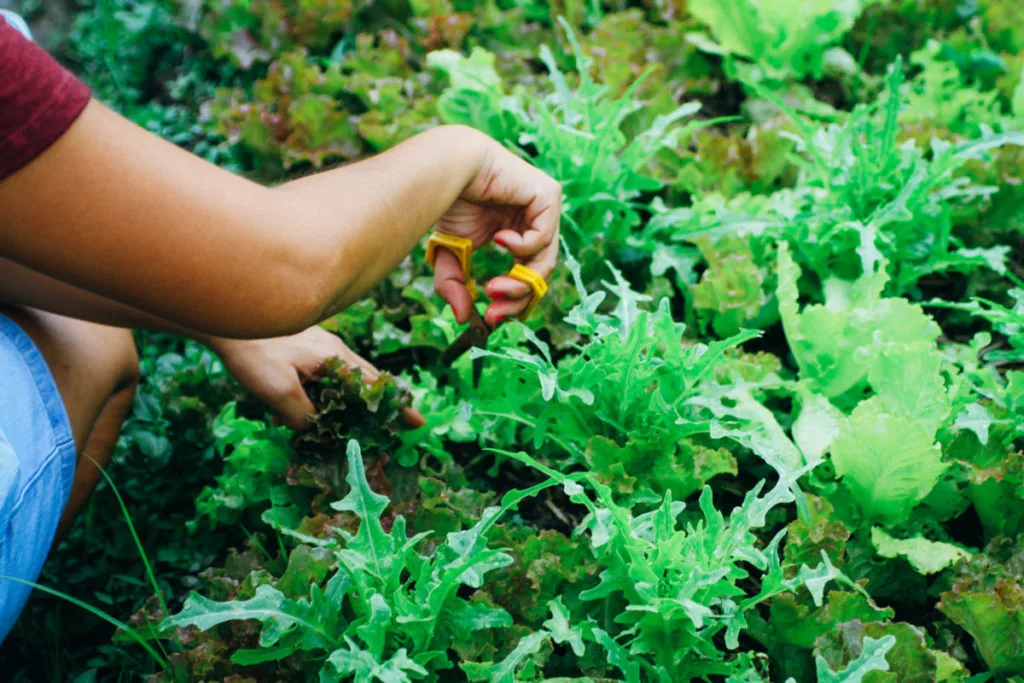
Any plant the grows in a rosette can be harvested multiple times by cutting a few of the larger outer leaves and leaving the inner smaller leaves to mature. Lettuce, bok choy, celery, chicory, kale, spinach, Swiss chard, and turnip greens are good rosette-type plants to grow.
Asparagus, chives, cress, dandelion, and scallions can be snipped off to the soil line and they will happily regrow.
Tip: To keep things productive, always give your plants a good watering after taking cuttings, as this will aid in their recovery and boost growth. You can also help replenish their energy stores by working fresh compost into the soil around each plant after each mini harvest.
Other Succession Gardening Tips
▪ Always aerate the soil and add new compost when harvesting and adding new plants to the garden.

▪ When you’re working with a smaller garden space, square foot gardening allows for a small, but densely planted, vegetable garden. If you have lots of space, wide rows allow you to grow larger quantities of food.
▪ Make notes of what you planted, and where, each growing season. Be sure to practice crop rotation each year to avoid plant disease and pests, reduce soil erosion, and boost fertility and yields the following season.
▪ When sowing seeds during the heat of midsummer, plant them twice as deep as you would in the spring. It’s essential to keep the soil consistently moist or new sprouts may die.
▪ Make sure you have enough seeds to last you through until the end of the season. Purchase or DIY seed tape to save time and reduce wasted seedlings that need to be thinned.

Get the famous Rural Sprout newsletter delivered to your inbox.
Including Sunday musings from our editor, Tracey, as well as “What’s Up Wednesday” our roundup of what’s in season and new article updates and alerts.

